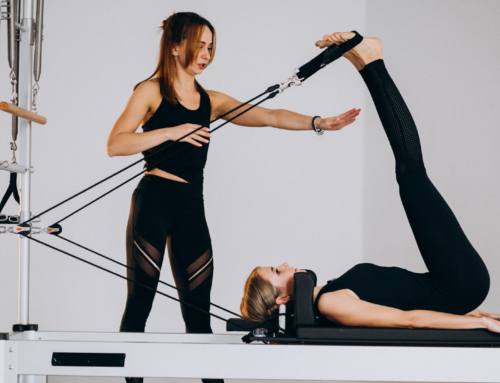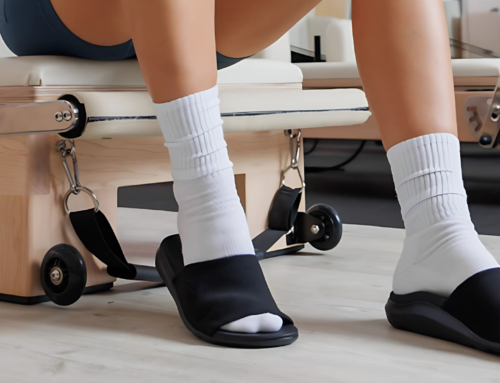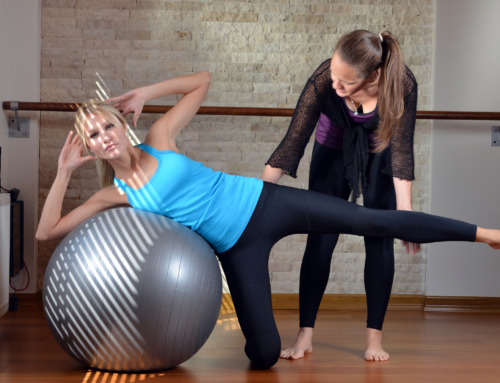Upper back strain is a common condition that affects millions of people worldwide. Characterized by pain and discomfort in the area between the neck and the lower back, this condition often results from muscle overuse, poor posture, or sudden injury. Left untreated, upper back strain can significantly impact daily activities and overall quality of life. Fortunately, physiotherapy offers an effective and holistic approach to managing and alleviating upper back strain. In this article, we’ll explore the causes, symptoms, and treatment options for upper back strain, with a focus on how physiotherapy can help.
What Is Upper Back Strain?
Upper back strain refers to the overstretching or tearing of muscles and ligaments in the upper thoracic spine. This region, which includes the 12 vertebrae of the thoracic spine, is responsible for supporting the upper body and facilitating a wide range of movements. Upper back strain can range from mild discomfort to severe pain, depending on the extent of the injury.
Causes of Upper Back Strain
Several factors can contribute to upper back strain. These include:
- Poor Posture: Sitting or standing with poor posture over long periods can strain the muscles and ligaments in the upper back.
- Repetitive Movements: Activities that involve repetitive overhead or forward-reaching movements, such as lifting or typing, can lead to overuse injuries.
- Trauma or Sudden Injury: Sudden movements, heavy lifting, or accidents can cause acute upper back strain.
- Weak Core and Back Muscles: Insufficient strength in the core and upper back muscles can result in improper movement patterns, increasing the likelihood of strain.
- Stress and Tension: Emotional stress can lead to muscle tightness, particularly in the shoulders and upper back.

Symptoms of Upper Back Strain
Common symptoms of upper back strain include:
- Pain or discomfort in the upper back, shoulders, or neck.
- Muscle stiffness or tightness.
- Limited range of motion.
- Muscle spasms or knots.
- Pain that worsens with movement or prolonged inactivity.
If these symptoms persist or worsen, it’s essential to seek professional evaluation to rule out more serious underlying conditions.

How Physiotherapy Can Help Relieve Upper Back Strain
Physiotherapy is a highly effective treatment approach for upper back strain. Through a combination of hands-on techniques, targeted exercises, and patient education, physiotherapists aim to address the root cause of the strain, alleviate pain, and restore normal function. Here’s how physiotherapy can help:
1. Pain Relief and Muscle Relaxation
A physiotherapist may use a variety of techniques to relieve pain and reduce muscle tension in the upper back. These include:
- Manual Therapy: Hands-on techniques such as massage, joint mobilization, and myofascial release can alleviate muscle tightness, improve circulation, and promote relaxation.
- Heat or Cold Therapy: Applying heat can relax tense muscles, while cold therapy can reduce inflammation and numb acute pain.
- Ultrasound Therapy: High-frequency sound waves may be used to improve tissue healing and reduce muscle spasms.

2. Postural Correction
Since poor posture is a leading cause of upper back strain, physiotherapists focus on identifying and correcting postural imbalances. They may:
- Teach proper ergonomic practices for sitting, standing, and working.
- Use taping techniques or braces to support proper posture during recovery.
- Guide you in exercises to strengthen postural muscles, such as the rhomboids and trapezius.
3. Strengthening and Conditioning
Strengthening the muscles of the upper back and core is a cornerstone of physiotherapy for upper back strain. Targeted exercises help restore strength, improve stability, and prevent future injuries. Examples include:
- Scapular Squeezes: Focus on squeezing the shoulder blades together to strengthen the rhomboids and improve posture.
- Wall Angels: Help increase mobility and strengthen the upper back muscles.
- Resistance Band Rows: Target the middle and upper back muscles for better strength and endurance.
4. Improving Flexibility and Range of Motion
Limited flexibility and stiffness can exacerbate upper back strain. Physiotherapists often incorporate stretching and mobility exercises into treatment plans, such as:
- Thoracic Extensions: Improve spinal mobility and reduce stiffness in the upper back.
- Cat-Cow Stretch: Relieves tension and promotes flexibility in the spine.
- Child’s Pose: Gently stretches the upper back and shoulders.
5. Education and Prevention
A key component of physiotherapy is educating patients about their condition and providing tools to prevent recurrence. Physiotherapists may:
- Teach proper lifting techniques to avoid future strain.
- Offer tips for setting up an ergonomic workspace.
- Recommend lifestyle changes, such as regular exercise and stress management, to maintain a healthy back.
A Sample Physiotherapy Plan for Upper Back Strain
Here’s an example of what a physiotherapy plan for upper back strain might look like:
- Initial Assessment: The physiotherapist conducts a thorough evaluation, including a physical exam and discussion of symptoms and lifestyle factors.
- Pain Management: The first few sessions focus on reducing pain and inflammation through manual therapy, heat/cold therapy, or ultrasound.
- Postural Correction: Posture analysis is conducted, and corrective measures are introduced, such as ergonomic adjustments and postural exercises.
- Strengthening and Mobility: Once pain is under control, the therapist guides you through a tailored exercise program to strengthen the upper back, improve mobility, and restore normal function.
- Ongoing Education: The therapist provides guidance on how to prevent future upper back strain, including proper movement techniques and self-care practices.
- Progress Review: Regular assessments ensure progress is on track, and the treatment plan is adjusted as needed.
When to See a Physiotherapist
If you experience persistent upper back pain that doesn’t improve with rest or over-the-counter remedies, it’s time to consult a physiotherapist. Other signs that professional help is needed include:
- Pain that radiates to the arms or legs.
- Difficulty moving or performing daily tasks.
- Muscle weakness or numbness.
- Recurrent episodes of upper back strain.
Conclusion
Upper back strain can be a debilitating condition, but with the right approach, recovery is achievable. Physiotherapy offers a comprehensive solution by addressing the underlying causes of strain, relieving pain, and strengthening the muscles to prevent recurrence. Whether it’s through manual therapy, targeted exercises, or education, physiotherapy can help you regain function and improve your quality of life.
If you’re struggling with upper back strain, consider seeking the help of a qualified physiotherapist to guide you on the path to recovery. With their expertise and a personalized treatment plan, you can overcome pain and enjoy a healthier, more active life.






